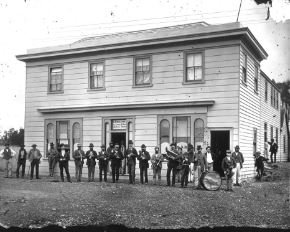Local post offices have been a cornerstone of communication and community life for centuries. But as the digital age continues to reshape the way we interact, the role of these once-vital institutions has been called into question. Exploring local post offices’ history: pillars of community connection or forgotten relics of the past? offers a closer look at the evolution of these hubs of communication, their significance in shaping communities, and their place in the modern world.

The Birth of Local Post Offices: Foundations of Connection
The history of local post offices dates back to ancient civilizations, but the modern postal system began to take shape in the 16th and 17th centuries. In many parts of the world, post offices started as small, informal operations that evolved into organized systems of delivering mail, goods, and important messages. Exploring local post offices’ history: pillars of community connection means looking at how these institutions formed the backbone of early communication.
In small towns and rural areas, the local post office often served as the community’s lifeline—enabling people to stay connected with distant family members, conduct business, and access news from around the world. For many, the post office was more than just a place to send and receive letters; it was a gathering point, a symbol of unity, and a space for social interaction. The architecture of post offices often reflected their importance to the community, with grand buildings designed to reflect the nation’s pride and strength.
A Changing Role: From Community Center to Modern Service
As the world moved through the Industrial Revolution and into the 20th century, the role of local post offices continued to evolve. The invention of the telephone, the rise of the internet, and the introduction of email fundamentally changed the way people communicated. Exploring local post offices’ history: pillars of community connection reveals how these institutions were forced to adapt to a changing world.
In many places, post offices became less of a community hub and more of a transactional service provider. Mail volumes skyrocketed during wartime, and the local post office became an essential lifeline for soldiers and families separated by distance. In some countries, post offices also became essential for banking, insurance, and other services, adding another layer of complexity to their roles.
However, as technology advanced and more people moved towards digital communication, the once-thriving local post office started to lose its central place in daily life. Exploring local post offices’ history: forgotten relics of the past shows how, in many communities, these institutions began to be seen as outdated and unnecessary. The rise of online shopping and digital communication further undermined the relevance of local post offices, leading to closures and downsizing in many areas.

The Decline of Local Post Offices: A Reflection of Societal Change
Today, many local post offices struggle to remain relevant in an increasingly digital world. Exploring local post offices’ history: forgotten relics of the past is not just about examining their decline but also understanding the societal shifts that contributed to it. The rapid development of email, social media, and messaging apps has made it easier than ever to communicate, reducing the need for physical mail.
In addition, the growth of e-commerce has led to the centralization of postal services, with larger, more automated facilities handling most mail processing and delivery. While larger cities often have well-funded and efficient postal networks, small-town post offices face mounting challenges. Many are understaffed, underfunded, and struggling to keep up with the demands of a modern, digital society.
Yet, in some communities, local post offices still hold a certain charm, acting as cultural landmarks and places of historical significance. Exploring local post offices’ history: forgotten relics of the past can also reveal the nostalgia and sentimentality many feel toward these institutions. In rural areas, post offices often remain one of the few remaining public spaces where people can engage in face-to-face interactions, making them still valuable in some ways despite their decreasing role in communication.
The Future of Local Post Offices: Adapting to a New Era
Despite the challenges facing local post offices, there is hope that they can find a new role in the 21st century. Exploring local post offices’ history: pillars of community connection in the future may look different from what we have known, but the core of what made these institutions so integral to community life—the ability to connect people—can still be preserved.
Some post offices have begun to embrace new technologies, offering digital services, community events, and even partnering with other organizations to remain relevant. In some cases, local post offices have been transformed into community centers or spaces for local businesses and artists, fostering a new type of connection. Exploring local post offices’ history: pillars of community connection might one day involve these spaces becoming even more integral to the social fabric of small towns and neighborhoods.

Stamp collecting, or philately, is a timeless hobby that brings together history, culture, and artistry in one small, collectible package. For many enthusiasts, the search for the most commonly collected stamps—those rare, valuable, or simply captivating stamps—is at the heart of the experience. Whether you’re a seasoned collector or just beginning your philatelic journey, understanding the most commonly collected stamps and the stories they tell can enhance your collection and deepen your appreciation for this rewarding hobby.
Conclusion: The Legacy of Local Post Offices
As we reflect on the history of local post offices, it’s clear that they have served as pillars of community connection for generations. While their role has diminished in the face of technological advancement, their legacy is undeniable. Exploring local post offices’ history: forgotten relics of the past may be the final chapter for some, but for others, there is still hope that these institutions can evolve and adapt to the needs of a new generation.
Whether they are viewed as symbols of a bygone era or as potential spaces for revitalization, local post offices will always hold a special place in the hearts of those who have relied on them for communication and connection. Exploring local post offices’ history offers a valuable reminder of the importance of community spaces in an increasingly disconnected world.



